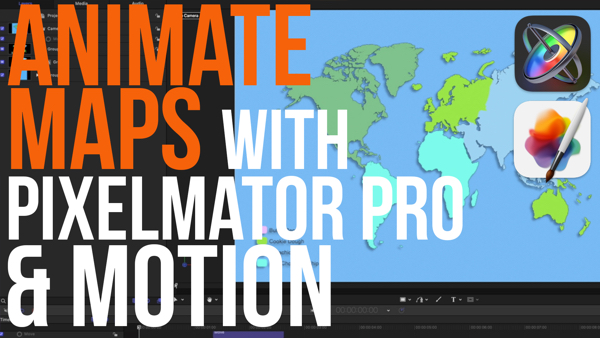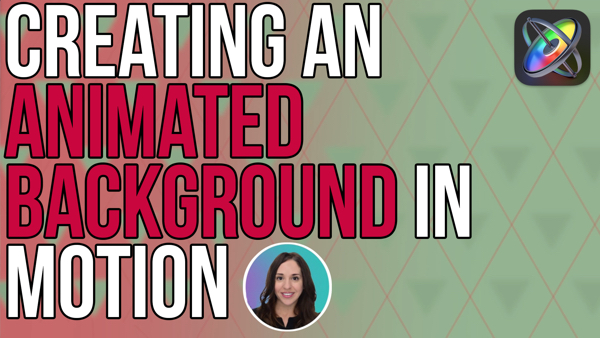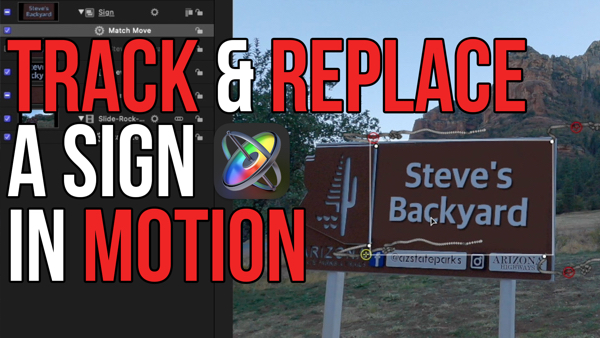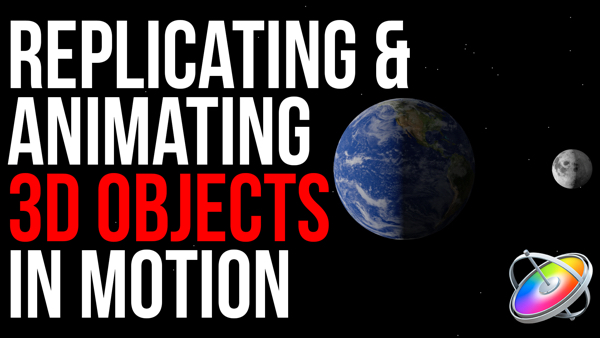How to Animate a Logo to Music in Motion 5
In “Under 5 Minutes” Mark Spencer will teach you how to animate a logo to music in Motion using a logo graphic, an audio file, and a gradient generator.
You will also learn how to use the Audio Parameter in Behaviors and how to animate the parameters of both behaviors and filters that have been applied to a layer. To illustrate how this is done, Mark animates the Twirl and Bulge filters that he applies to the logo.
In this episode, I’ll show you how to animate a logo to music.
I’m Mark Spencer with RippleTraining.com, welcome to Motion Magic where you’ll learn visual effects and motion graphics in under 5 minutes.
Here I am in Motion where I’ve already imported my Ripple Training logo graphic. I’ve also added a soft gradient generator from the library, and I’ve imported an audio file which I can see here in the audio tab. Or I’ll go back to the layers list, then from the window menu, select audio timeline so I can see it here in the timeline with the waveform. I’ve also animated the logo on screen with keyframes that you can see here.
Let’s play the project.
To animate the logo to the music I’ll use the audio parameter behavior. One way to apply it is to go to the Library, to behaviors, to parameter. Then I’ll drag the audio behavior onto the logo in the layers list. In the Heads-Up display I’ll choose the source audio from the “To” pop-up menu.
Now, I can choose what parameter I want to animate from this “To”pop-up menu down here. As you can see, there are many parameters to choose from. I’ll choose transform, position, Y.
If I play the project now,
nothing animates. The scale parameter here in the HUD sets how much the audio affects the chosen parameter.
Let’s crank it up to around 200, and play that.
For more control over the animation, I like to go to the inspector, to the behaviors tab. Here I have the same controls in the HUD, and some additional ones. I can use the audio graph to limit the animation to a specific range of frequencies, and range of volume levels.
For this example, I’ll include all frequencies and levels. I can smooth the overall animation with Smoothness.
Ok, let’s put that back.
Rather than smooth the overall animation, I often change peaks to smooth to make the animation just a little less frenetic.
This behavior is very powerful. In addition to all these parameters available here, you can animate the parameters of behaviors and filters applied to a layer.
Let’s return to the library, to the filters category, to Distortion. I’ll apply the Twirl and Bulge filters.
I’ll move the playhead to where I can see the logo, then in the filters inspector, I’ll set the twirl to 0, and the bulge amount to 0, so they don’t affect the logo.
I want the audio behavior to animate these parameters, so I’ll return to the behaviors inspector, and set “apply to” to Filters, Twirl, Twirl, and I’ll set the scale to 2.
Then I’ll duplicate this behavior be selecting it in the layers list and pressing Command+D.
I’ll rename them.
I’ll set this one to Filters, Bulge, Amount and crank up the scale closer to 4,000.
Finally, in the timeline, I’ll move the playhead to the point where the snare heads start, select the audio behavior that affects the twirl, and press O to trim it so only the Bulge affects the rest of the animation.
And let’s play that back.
You can download this project from the link below.
Click the Subscribe button below. If you have an idea, comment or suggestion, leave those below as well. Go to RippleTraining.com for fast professional training on Final Cut Pro, Motion, and DaVinci Resolve from industry professionals.
I’m Mark Spencer with RippleTraining.com, welcome to Motion Magic where you’ll learn visual effects and motion graphics in under 5 minutes.
Here I am in Motion where I’ve already imported my Ripple Training logo graphic. I’ve also added a soft gradient generator from the library, and I’ve imported an audio file which I can see here in the audio tab. Or I’ll go back to the layers list, then from the window menu, select audio timeline so I can see it here in the timeline with the waveform. I’ve also animated the logo on screen with keyframes that you can see here.
Let’s play the project.
To animate the logo to the music I’ll use the audio parameter behavior. One way to apply it is to go to the Library, to behaviors, to parameter. Then I’ll drag the audio behavior onto the logo in the layers list. In the Heads-Up display I’ll choose the source audio from the “To” pop-up menu.
Now, I can choose what parameter I want to animate from this “To”pop-up menu down here. As you can see, there are many parameters to choose from. I’ll choose transform, position, Y.
If I play the project now,
nothing animates. The scale parameter here in the HUD sets how much the audio affects the chosen parameter.
Let’s crank it up to around 200, and play that.
For more control over the animation, I like to go to the inspector, to the behaviors tab. Here I have the same controls in the HUD, and some additional ones. I can use the audio graph to limit the animation to a specific range of frequencies, and range of volume levels.
For this example, I’ll include all frequencies and levels. I can smooth the overall animation with Smoothness.
Ok, let’s put that back.
Rather than smooth the overall animation, I often change peaks to smooth to make the animation just a little less frenetic.
This behavior is very powerful. In addition to all these parameters available here, you can animate the parameters of behaviors and filters applied to a layer.
Let’s return to the library, to the filters category, to Distortion. I’ll apply the Twirl and Bulge filters.
I’ll move the playhead to where I can see the logo, then in the filters inspector, I’ll set the twirl to 0, and the bulge amount to 0, so they don’t affect the logo.
I want the audio behavior to animate these parameters, so I’ll return to the behaviors inspector, and set “apply to” to Filters, Twirl, Twirl, and I’ll set the scale to 2.
Then I’ll duplicate this behavior be selecting it in the layers list and pressing Command+D.
I’ll rename them.
I’ll set this one to Filters, Bulge, Amount and crank up the scale closer to 4,000.
Finally, in the timeline, I’ll move the playhead to the point where the snare heads start, select the audio behavior that affects the twirl, and press O to trim it so only the Bulge affects the rest of the animation.
And let’s play that back.
You can download this project from the link below.
Click the Subscribe button below. If you have an idea, comment or suggestion, leave those below as well. Go to RippleTraining.com for fast professional training on Final Cut Pro, Motion, and DaVinci Resolve from industry professionals.




